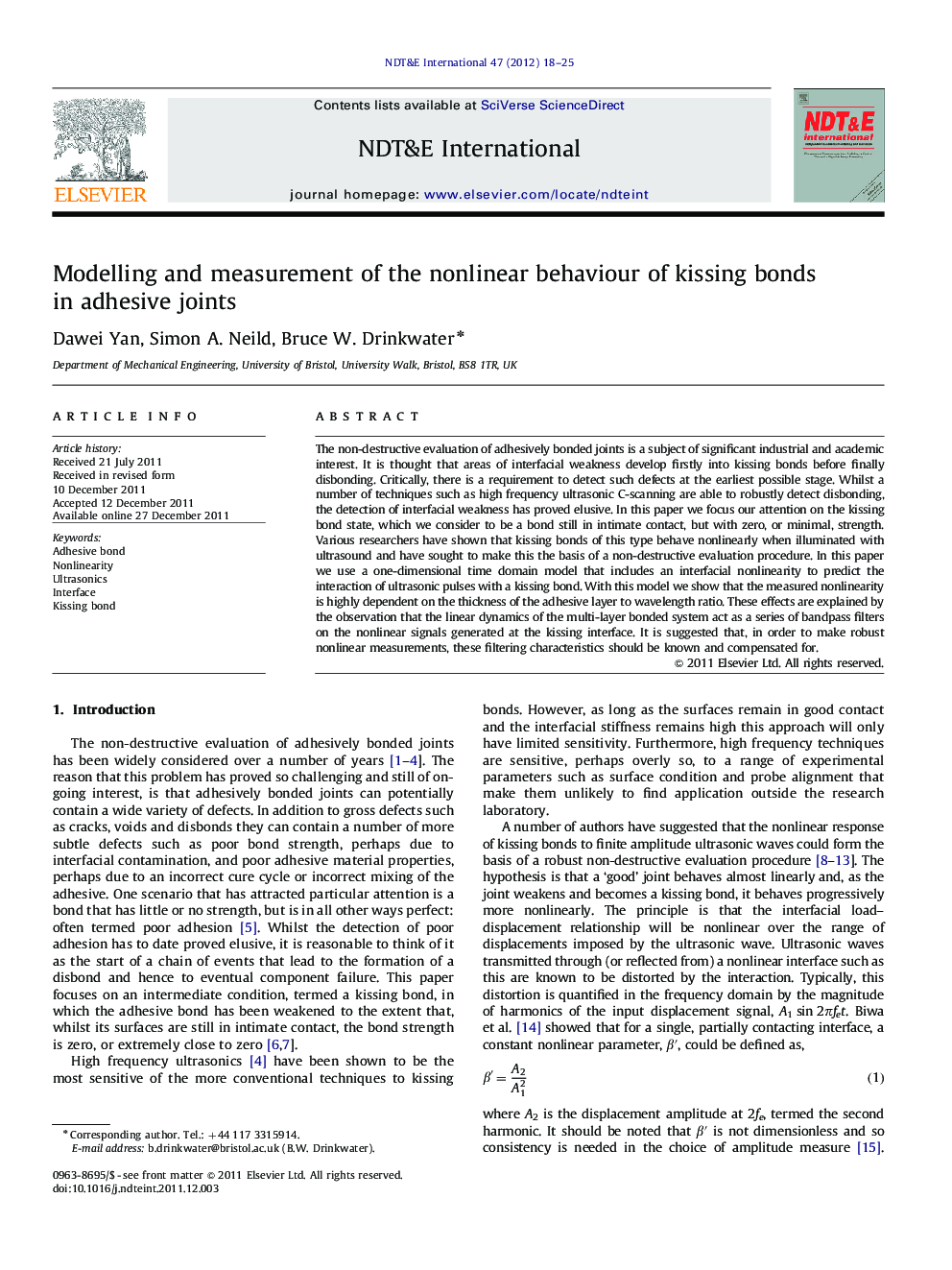| Article ID | Journal | Published Year | Pages | File Type |
|---|---|---|---|---|
| 295306 | NDT & E International | 2012 | 8 Pages |
The non-destructive evaluation of adhesively bonded joints is a subject of significant industrial and academic interest. It is thought that areas of interfacial weakness develop firstly into kissing bonds before finally disbonding. Critically, there is a requirement to detect such defects at the earliest possible stage. Whilst a number of techniques such as high frequency ultrasonic C-scanning are able to robustly detect disbonding, the detection of interfacial weakness has proved elusive. In this paper we focus our attention on the kissing bond state, which we consider to be a bond still in intimate contact, but with zero, or minimal, strength. Various researchers have shown that kissing bonds of this type behave nonlinearly when illuminated with ultrasound and have sought to make this the basis of a non-destructive evaluation procedure. In this paper we use a one-dimensional time domain model that includes an interfacial nonlinearity to predict the interaction of ultrasonic pulses with a kissing bond. With this model we show that the measured nonlinearity is highly dependent on the thickness of the adhesive layer to wavelength ratio. These effects are explained by the observation that the linear dynamics of the multi-layer bonded system act as a series of bandpass filters on the nonlinear signals generated at the kissing interface. It is suggested that, in order to make robust nonlinear measurements, these filtering characteristics should be known and compensated for.
